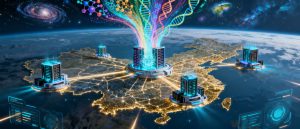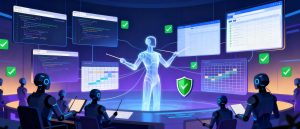When a leading global consumer technology enterprise faced mounting complexity and sluggish development cycles in its experimentation platform, leaders recognized that patchwork solutions were not enough. Instead, they pursued a comprehensive evolution—one prioritizing both system efficiency and human experience. This transformation proved that aligning scalable architecture with user needs delivers both immediate results and a robust foundation for future growth.
The Challenge: Complexity Slowing Innovation
The company’s experimentation pipeline was originally a powerhouse for digital product development and rapid testing. However, as the platform’s breadth expanded across the organization, so did operational pain points. Teams encountered manual approval bottlenecks, disjointed workflows, and inconsistent tooling. These problems collectively impeded speed, reduced confidence, and heightened risk, threatening the company’s ability to innovate at scale.
Recognizing that true progress demanded more than incremental fixes, the organization committed to a strategic overhaul designed to eliminate inefficiencies and unleash the full potential of its experimentation engine. The vision? Create a unified, scalable self-service platform capable of supporting rapid, secure, and collaborative product experimentation.
- Accelerate the end-to-end experimentation pipeline
- Remove manual bottlenecks to reduce risk and time waste
- Align diverse teams around common metrics, ownership, and accountability
- Ensure innovation is both safe and scalable, even as demands increase
The Approach: Fusing Human-Centered Design and Technical Excellence
To drive lasting change, the enterprise engaged expert guidance for a focused, seven-week high-level assessment. This engagement combined human-centered methodologies with rigorous technical strategy to reimagine the experimentation lifecycle.
The assessment applied the Double-Diamond process, moving systematically from problem identification to delivery of actionable solutions:
- Problem Discovery: Direct interviews with engineering and product leaders highlighted core barriers, from slow approvals to ambiguity in ownership.
- Problem Synthesis: Stakeholders participated in weekly alignment sessions, clarifying pain points and shaping a shared vision for the future.
- Solution Discovery: A design thinking workshop united cross-functional teams to map every stage of the experimentation journey. Participants surfaced not just obstacles, but high-leverage opportunities to simplify, standardize, and scale processes.
- Solution Synthesis: With clear needs identified, the team crafted a streamlined vision for automation and scalability—grounded in guiding principles and broken down into impactful, prioritized initiatives.
Roadmap to Success: A Stepwise, Collaborative Process
Weeks 1–2: Diagnosing the Pain Points
Initial discovery began with in-depth interviews, engaging voices from engineering, product management, and leadership. These discussions exposed systemic delay triggers and surfaced valuable insights into the entire experimentation lifecycle.
Week 3: Visualizing the Experimentation Journey
An on-site workshop gathered stakeholders from throughout the organization for collaborative mapping of the experimentation workflow. This exercise revealed areas of friction and, more importantly, revealed opportunities for simplification and growth.
Weeks 4–6: Building the Scalable Platform Vision
Armed with unified goals and specific user needs, the team developed a bold but practical blueprint for change. High-level recommendations were created, each supported by outcome-oriented roadmaps to guide phased implementation. Guiding principles ensured the system redesign would remain human-centric and scalable as it evolved.
Week 7: Delivering Actionable, Lasting Recommendations
The assessment was capped by a comprehensive, on-site presentation to the company’s leadership, outlining:
- A prioritized roadmap for process and system enhancements
- Four Requests for Comments (RFCs) to initiate high-impact technical changes
- A detailed service blueprint of the end-to-end experimentation lifecycle
- Visual synthesis connecting stakeholder research, design principles, and solution strategies
The Outcome: Turning Bottlenecks into Breakthroughs
The result of this focused seven-week engagement was a clear, actionable foundation for transformative change. By bridging the gap between teams and equipping the organization with a service blueprint and shared metrics, the enterprise gained the clarity and alignment needed to accelerate its experimentation program. Manual wastes and friction points were translated into streamlined workflows and heightened autonomy, all while ensuring quality and security remained central.
Immediate Benefits Included:
- Unified visibility and ownership across teams
- Reduced manual intervention, speeding up the testing and release process
- Clearly defined, actionable roadmaps and RFCs to guide technical and process shifts
- A scalable framework built to adapt to future demands
Lasting Impact for Innovation
This case stands as a testament to what’s possible when technical rigor and user-centered thinking converge. Not only did it produce significant time and cost savings, but it established a playbook for sustainable, safe, and rapid product development at enterprise scale.
Enterprises looking to build the next generation of experimentation or digital platforms stand to benefit immensely from marrying scalable system design with deep attention to human factors. With the right process and partnerships, the path from friction to flow—and from bottleneck to breakthrough—is within reach.
Read more such articles from our Newsletter here.



